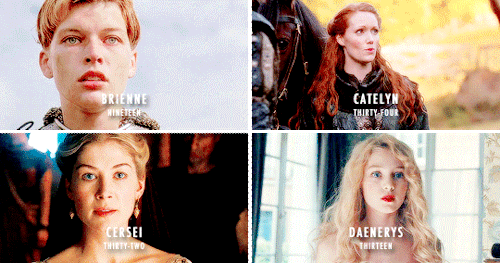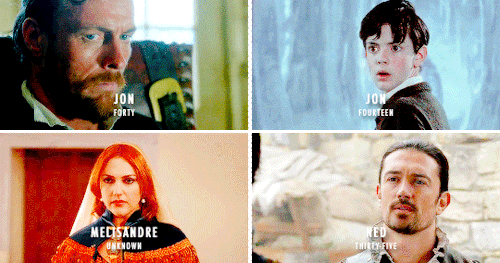Some Tips For Using A Few Words To Describe Voices:
Some tips for using a few words to describe voices:
1. Tone Words: Use tone words to convey the emotional quality of a voice. For example, you can describe a voice as "melodic," "soothing," "sharp," "gentle," or "commanding" to give readers a sense of the tone.
2. Pitch and Range: Mention the pitch and range of the voice. Is it "deep," "high-pitched," "raspy," or "full-bodied"? This can provide insight into the character's age, gender, or emotional state.
3. Accent and Diction: Describe the character's accent or diction briefly to give a sense of their background or cultural influences. For instance, "British-accented," "Southern drawl," or "formal."
4. Volume: Mention the volume of the voice, whether it's "whispering," "booming," "murmuring," or "hushed."
5. Quality: Use terms like "velvet," "silken," "gravelly," "honeyed," or "crisp" to convey the texture or quality of the voice.
6. Rate of Speech: Describe how fast or slow the character speaks, using words like "rapid," "slurred," "measured," or "rambling."
7. Mood or Emotion: Indicate the mood or emotion carried by the voice. For example, a "quivering" voice may convey fear or anxiety, while a "warm" voice may express comfort and reassurance.
8. Resonance: Describe the resonance of the voice, such as "echoing," "nasal," "booming," or "tinny."
9. Timbre: Mention the timbre of the voice, using words like "rich," "thin," "clear," or "smoky."
10. Cadence: Highlight the rhythm or cadence of speech with descriptors like "staccato," "lilting," "rhythmic," or "halting."
11. Intonation: Convey the character's intonation by saying their voice is "sarcastic," "apologetic," "confident," or "questioning."
12. Vocal Characteristics: If applicable, mention unique vocal characteristics, like a "lisp," "stutter," "drawl," or "accented 'r'."
More Posts from Notsoaveragebear and Others










ASOIAF POV Characters + Ages when they enter the series
Some characters’ ages are estimates. Ages/estimates depend on which book they enter the series during, not necessarily their ages at a consistent time. Calculated using | Fancasting
how to weave subplots into your story without getting tangled in the mess
Subplots: the spicy side quests of your main narrative. They deepen your world, flesh out your characters, and keep things interesting. But if you’ve ever added one and ended up with a story that feels like it’s running in six directions at once… yeah. Let’s fix that.
1. your subplot should serve the main plot
Don’t just throw in a romance arc or a secret sibling reveal because it’s fun (though it is fun). Ask:
- Does this subplot challenge the main character’s goals?
- Does it echo or contrast the main theme?
- Does it change something by the end?
If it’s just a cute side quest with no real impact, it’s fanfic material for your own story. Cool, but maybe not plot-essential.
2. intertwine, don’t parallel
Bad: your subplot exists in a bubble, running beside the plot but never touching it.
Better: your subplot interacts with the main plot. Maybe it complicates things. Maybe it supports the MC in a moment of crisis. Maybe it explodes everything.
Example: your MC is hunting a killer, and the subplot is their failing marriage. Good subplotting means the stress of the hunt affects the marriage, and the marriage affects the hunt.
3. stagger your arcs
Your main plot might hit its midpoint twist at chapter 10. Have a subplot hit a *smaller* emotional beat around chapter 7 or 13. It keeps pacing dynamic and gives your readers something to chew on between big moments.
4. use subplots to develop side characters
Side characters are more than background noise. Give them wants. Give them stakes. Let their stories *collide* with your MC’s. That’s when the magic happens.
5. know when to shut it down
Not every subplot needs a 3-act structure and a dramatic finale. Some are small. Some fade out naturally. Some just shift the perspective enough to reframe the main plot. If you’re tying up subplot #6 with a bow in the epilogue, maybe ask yourself if it really needed to be there.
6. outline the spiderweb
It helps to map out how every subplot connects to the main story. Literally. Draw lines. Make a chaos diagram. It doesn’t have to be neat—just make sure those threads touch.
TL;DR:
Subplots are great. Subplots are juicy. But they’re not decoration—they’re infrastructure. Weave them into the story’s bones or risk writing 3 novels in one.
Wrote a little something while working on my longfic
Good Luck Babe by Chappell Roan is very dorogrid coded i fear
5 things your character can't do while speaking
Choke. Just think about it, seriously. Think about what choking is and imagine speaking while it’s happening. That would fuckin’ hurt, man.
Hiss. Look, it’s just not possible, okay? No matter how “evil” you want your character to seem.
Snarl. Animals snarls. The Beast from Beauty and the Beast snarls. The Hulk snarls. You know who doesn’t snarl? PEOPLE WHEN THEY’RE SPEAKING.
Shriek. Come on, 99% of the time, “shriek” is not the word you want.Let’s face it: if you put an exclamation point at the end of the sentence, your reader gets the picture. Don’t bring to mind banshees and screaming toddlers.
Sneer. I’m not even going to bother explaining this one. “SNEER” ISN’T EVEN A SOUND.
If you're a writer you're supposed to write a lot of bullshit. It's part of the gig. You have to write a lot of absolute garbage in order to get to the good bits. Every once in a while you'll be like "Oh, I wish I hadn't wasted all that time writing bullshit," but that's dumb. That's exactly the same as an Olympic runner being like "Oh, I wish I hadn't wasted all that time running all those practice laps"
-
 russetfoxfur reblogged this · 5 days ago
russetfoxfur reblogged this · 5 days ago -
 analogbasilisk reblogged this · 1 week ago
analogbasilisk reblogged this · 1 week ago -
 princessprepared reblogged this · 1 week ago
princessprepared reblogged this · 1 week ago -
 ems-haunted-library reblogged this · 1 week ago
ems-haunted-library reblogged this · 1 week ago -
 chaosinsp reblogged this · 1 week ago
chaosinsp reblogged this · 1 week ago -
 frog-squeaks liked this · 1 week ago
frog-squeaks liked this · 1 week ago -
 elainson liked this · 1 week ago
elainson liked this · 1 week ago -
 watergeus reblogged this · 2 weeks ago
watergeus reblogged this · 2 weeks ago -
 fluteofinfinitemelody reblogged this · 2 weeks ago
fluteofinfinitemelody reblogged this · 2 weeks ago -
 semestanyamin liked this · 2 weeks ago
semestanyamin liked this · 2 weeks ago -
 meance-in-theory liked this · 2 weeks ago
meance-in-theory liked this · 2 weeks ago -
 cherishmartell reblogged this · 2 weeks ago
cherishmartell reblogged this · 2 weeks ago -
 teal-blue-genesis liked this · 3 weeks ago
teal-blue-genesis liked this · 3 weeks ago -
 repressedbastard liked this · 3 weeks ago
repressedbastard liked this · 3 weeks ago -
 kaygirl6567 liked this · 1 month ago
kaygirl6567 liked this · 1 month ago -
 smorallow liked this · 1 month ago
smorallow liked this · 1 month ago -
 todomemolesta18 reblogged this · 1 month ago
todomemolesta18 reblogged this · 1 month ago -
 it-is-what-it-is-what-it-is reblogged this · 1 month ago
it-is-what-it-is-what-it-is reblogged this · 1 month ago -
 legendaryblondze reblogged this · 1 month ago
legendaryblondze reblogged this · 1 month ago -
 legendzjagz liked this · 1 month ago
legendzjagz liked this · 1 month ago -
 elizabettown liked this · 1 month ago
elizabettown liked this · 1 month ago -
 lost-on-stage reblogged this · 1 month ago
lost-on-stage reblogged this · 1 month ago -
 lost-on-stage liked this · 1 month ago
lost-on-stage liked this · 1 month ago -
 owlcat-art liked this · 1 month ago
owlcat-art liked this · 1 month ago -
 vverago reblogged this · 1 month ago
vverago reblogged this · 1 month ago -
 ilikedarkrai liked this · 1 month ago
ilikedarkrai liked this · 1 month ago -
 xx-leech liked this · 1 month ago
xx-leech liked this · 1 month ago -
 daylinlavellan reblogged this · 1 month ago
daylinlavellan reblogged this · 1 month ago -
 daylinlavellan liked this · 1 month ago
daylinlavellan liked this · 1 month ago -
 cosmiclv reblogged this · 1 month ago
cosmiclv reblogged this · 1 month ago -
 cxnsdellaj liked this · 1 month ago
cxnsdellaj liked this · 1 month ago -
 queenofthursday6599-blog reblogged this · 1 month ago
queenofthursday6599-blog reblogged this · 1 month ago -
 doomednarrative liked this · 1 month ago
doomednarrative liked this · 1 month ago -
 wander-over-the-words reblogged this · 1 month ago
wander-over-the-words reblogged this · 1 month ago -
 sterbendehund liked this · 1 month ago
sterbendehund liked this · 1 month ago -
 beloveddame liked this · 1 month ago
beloveddame liked this · 1 month ago -
 anotherlesbiandad reblogged this · 1 month ago
anotherlesbiandad reblogged this · 1 month ago -
 bts-roses liked this · 1 month ago
bts-roses liked this · 1 month ago -
 probablywatchingsitcoms liked this · 1 month ago
probablywatchingsitcoms liked this · 1 month ago -
 mameeta liked this · 2 months ago
mameeta liked this · 2 months ago -
 antonsbf liked this · 2 months ago
antonsbf liked this · 2 months ago -
 ringoftheanscestors reblogged this · 2 months ago
ringoftheanscestors reblogged this · 2 months ago -
 katurious liked this · 2 months ago
katurious liked this · 2 months ago -
 convictshipcaptain liked this · 2 months ago
convictshipcaptain liked this · 2 months ago -
 unbindingkerberos liked this · 2 months ago
unbindingkerberos liked this · 2 months ago -
 dennys-at-3-am liked this · 2 months ago
dennys-at-3-am liked this · 2 months ago

fanfic writer | current fandoms: ASoIaF, Star Wars, Code Geass
52 posts


